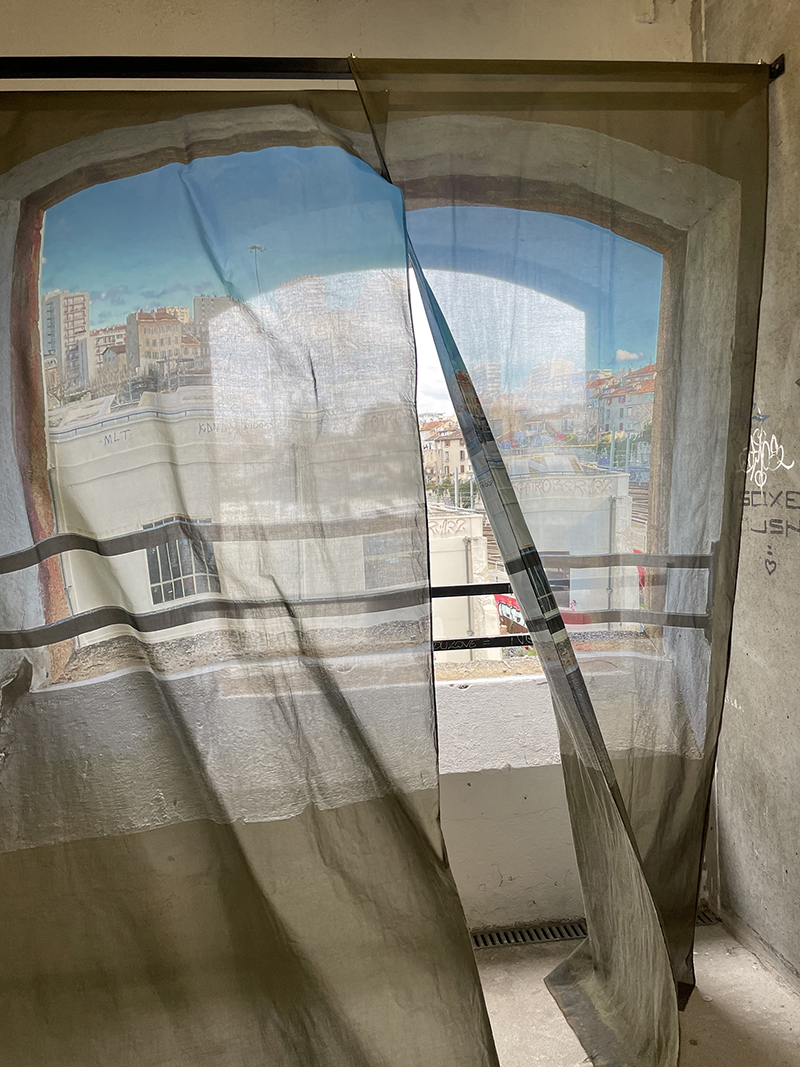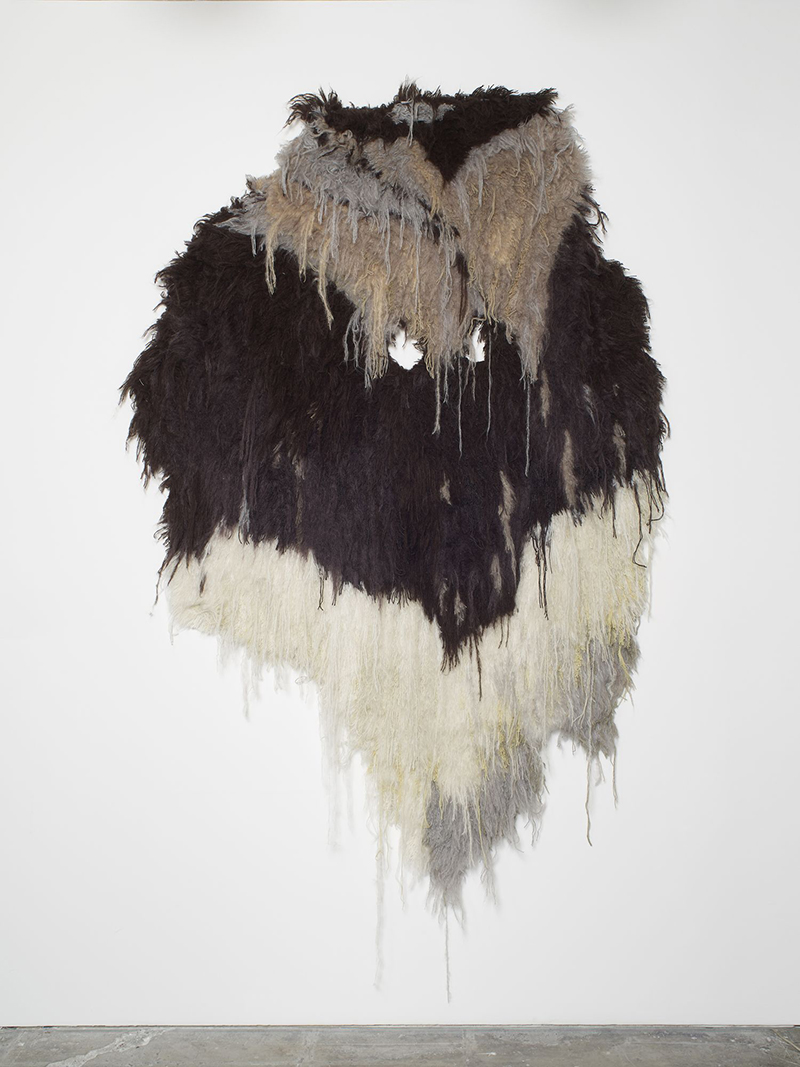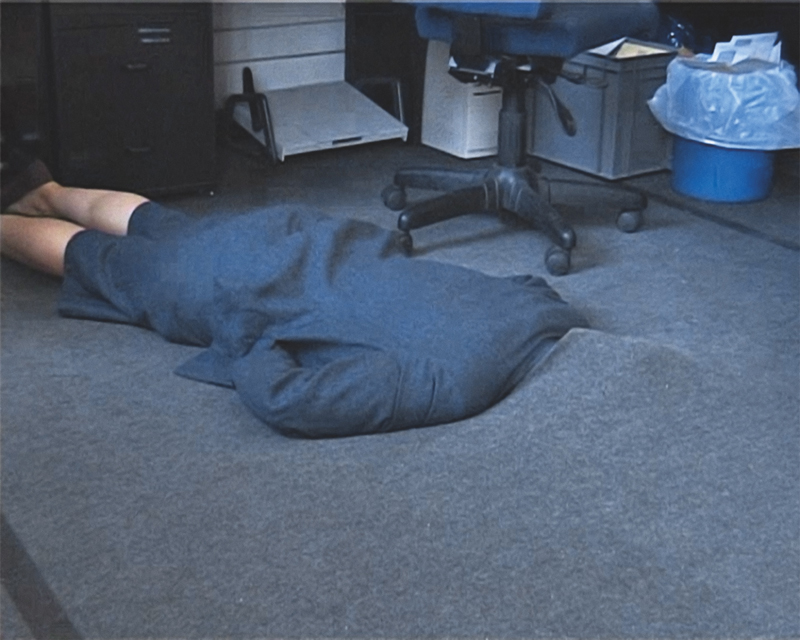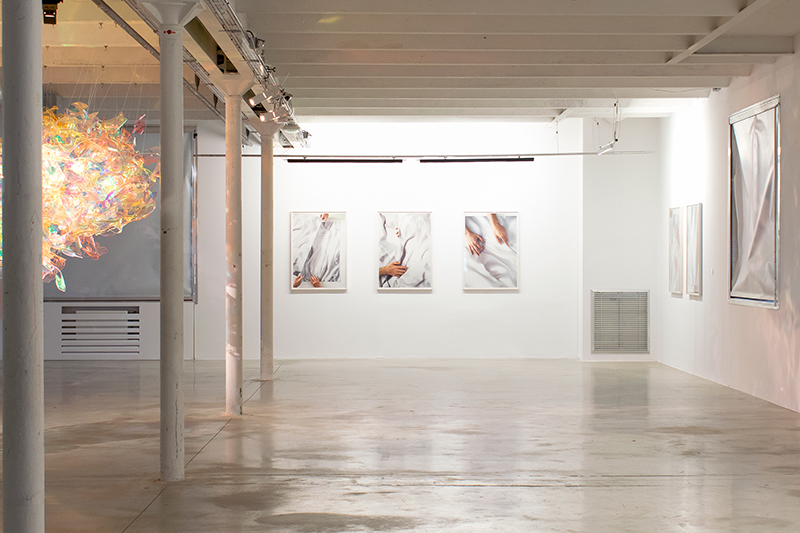by Lucia Longhi // June 1, 2022
This article is part of our feature topic ’FAKE.’
The group exhibition ‘Mimicry-Empathy,’ curated by German artist Susanne Bürner, brings together works that activate deep connections between the concepts of mimicry and empathy on different levels: biological, social, emotional, historical. Instinctively, we connect the first word to the animal realm, and the second to human beings, and so assume that each attitude belongs to its respective category. But what if human empathy can be a form of mimicry, and animal mimicry can be a form of empathy? The exhibition traverses different ideas of “becoming something else,” by means of faking, fooling, hiding, mimicking and reflecting. Starting from the work of literary critic, philosopher and sociologist Roger Caillois, who suggests that animals do not adapt to the environment for their own good but because of a mythological desire to “dissolve into the world,” the exhibition detaches from the idea of mimicry—either with an environment or with a counterpart—as a strategic act guided by a purpose. This brings it a step closer to the idea of empathy which, as the press release states, “is only viable in the absence of purpose.” Initiated in 2018 at the Lajevardi Foundation in Tehran, the project is now hosted at the Friche La Belle de Mai in Marseille and includes a series of screenings and talks. The works of 18 artists marshal the manifold manifestations of the concept of mimicry seen as the act of dissolving into the other, fading into the environment, morphing towards new forms, faking one’s own identity or delivering a mere optical illusion.

BLESS: ‘Curtain with a view,’ 2022, curtains for two windows, installation view from ‘Mimicry-Empathy’ // Photo courtesy of Fraeme and Susanne Bürner
It is exactly a trompe l’oeil that literally opens the curtains of the show; before entering the exhibition space at the top floor of the industrial building, our gaze is captured by four fluttering curtains hanging in the entrance hall. It is a site specific installation by German-French artist duo BLESS, ‘Curtain with a view’ (2022), which, instead of covering the view through the windows, the landscape outside is printed onto the curtains, thus activating an illusionistic game reminiscent of those in Italian Renaissance palaces. The light material swaying in the wind succeeds in disorienting the viewer in a playful way. The curtains are the perfect prelude to what awaits: a chameleon-like spectacle where disorientation, imitation, and faking take center stage.
Once inside the space, one is immediately plunged into semidarkness. Hanging on the right hand wall and illuminated by a theatrical spotlight is a mysterious figure that seems to welcome the visitor. It is ‘Igor’ (2019) by Caroline Achaintre. In literature, Igor is the servant or antagonist of the hero. In this case, he is a large tufted wool mask that can embody both the benevolent figure of the helper, but also the alter-ego who knows the dark side of the hero. His hieratic and inquisitorial gaze makes us question not only his identity but also our own: a human nature made of a dualism between good and evil, purity and monstrosity. Based on the situations to which we have to adapt, what mask do we put on?

Caroline Achaintre: ‘Igor,’ 2019, Hand-tufted wool, 260 x 165 cm // Courtesy Galerie Art : Concept, Paris
The first step towards understanding mimicry comes from the awareness that this is a process that occurs within all of us: dualism and kaleidoscopic identities intrinsically belong to humans. The change of identity is within us even before we address it to others. Some of the works in the exhibition succeed in unearthing this natural tendency we have to change and adapt, and they also manage to dissect the various reasons why we do so, such as the video ‘Grey Area’ (2001) by Sofia Hultén. The scene is reminiscent of the game of hide and seek, but the truth behind the artist’s clumsy attempts to blend in with the office furniture is more dramatic, suggesting topical issues such as the invisibility of workers, who voluntarily or involuntarily become one with their task, and also the current pressing issue of the woman-object, forced to become a sort of piece of furniture or a tool.

Sofia Hultén: ‘Grey Area,’ 2001, Video, 9 min. loop // Image courtesy of the artist and Daniel Marzona, Berlin

‘Mimicry—Empathy,’ exhibition view, 2022, a project by Susanne Bürner, produced by Fræme, Friche la Belle de Mai, Marseille // Photo courtesy of Fræme
In keeping with mimicry as the physical incorporation of the body into the environment, the photographs by Holger Trülzsch ‘Hörzing Grotto’ (1971) are emblematic of the desire not only to blend into nature but to go in search of the wild part within us. The images show Vera von Lehndorff, a model from the 70s, covered with mud inside a cave. As Bürner explains, the works “negotiate the formation of identities through experimental mimicry in various ways. Visitors are invited to discover images of themselves in the mirror of the exhibition.” Metaphors aside, there are indeed mirrors in the room. In ‘Stick Men’ (2021) by Alexandra Leykauf, the superimposition of figures occurs in a triple way: our body is reflected in the seven mirrors and is also projected onto images of anthropomorphic trunks—pagan ritualistic objects—triggering questions about man’s atavistic attempt to identify with nature.
Photography plays an important role in this exhibition: a series of photographs by Wiktor Gutt & Waldemar Raniszewski ‘Expressions on a Face’ (1981) display close-ups of young people at a festival in Poland: body-painting takes on the meaning of masking to mislead the authorities, but also represents the “freedom of expression, and speeches of protest and equality.” In the double role of curator and artist, Susanne Bürner herself exhibits a work: in ‘Seide für VB, AP, BD und MA’ (2018) hands passionately caress what look to be wrinkled fabrics. The sensation is almost palpable, only to discover that they are touching photographs of fabrics. The strong tactile sensation that the photos elicit is counterbalanced by the illusionistic trick, in a sensitive meta short circuit.
The strongest work appears to be the furthest from the traditional understanding of mimicry but with a direct connection to empathy: in ‘Loss’ 2021, Sonya Schönberger is photographed in the act of sprinkling her face with the ashes of her dead friend. The peculiar diptych includes a mirror, where the viewer can further engage with the idea of incorporating otherness into themselves by physically blending with the body of someone else.
The exhibition offers, in an almost didactic way, a fairly complete cross section of all the possible iterations of the concept of adaptation, even including a number of intense poetic peaks, but without conveying a cohesive path. It is rather an archipelago of images, an encyclopedia of meanings, perhaps even too vast, and therefore disorienting at times. Undoubtedly, however, thanks to some specific works such as Sonya Schönberger’s or Alexandra Leykauf’s, one leaves this journey with a new angle on the concepts of mimicry and fake. That is to say: an approach that breaks away from a negative meaning and approaches the notion of compassion and understanding. Sometimes we trick others into games of disorientation, we fake, we duplicate, we change or hide our true nature, in a desperate attempt to access the other, to become the other. At the end of the day, what is fake can, by changing the point of view, also be true.
Exhibition Info
Friche de la Belle de Mai
‘Mimicry-Empathy’
Exhibition: Mar. 12–June 5, 2022
Admission: € 5 (reduced € 3)
lafriche.org
fraeme.art
41 Rue Jobin, 13003 Marseille, France click here for map
























